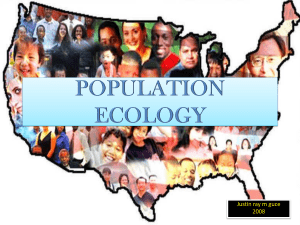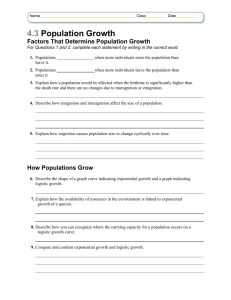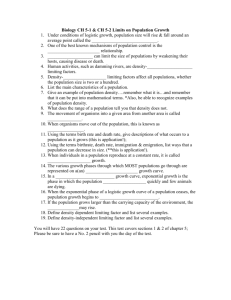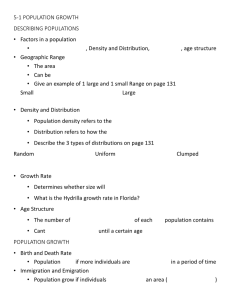Fish Kill Unit Week 5
advertisement
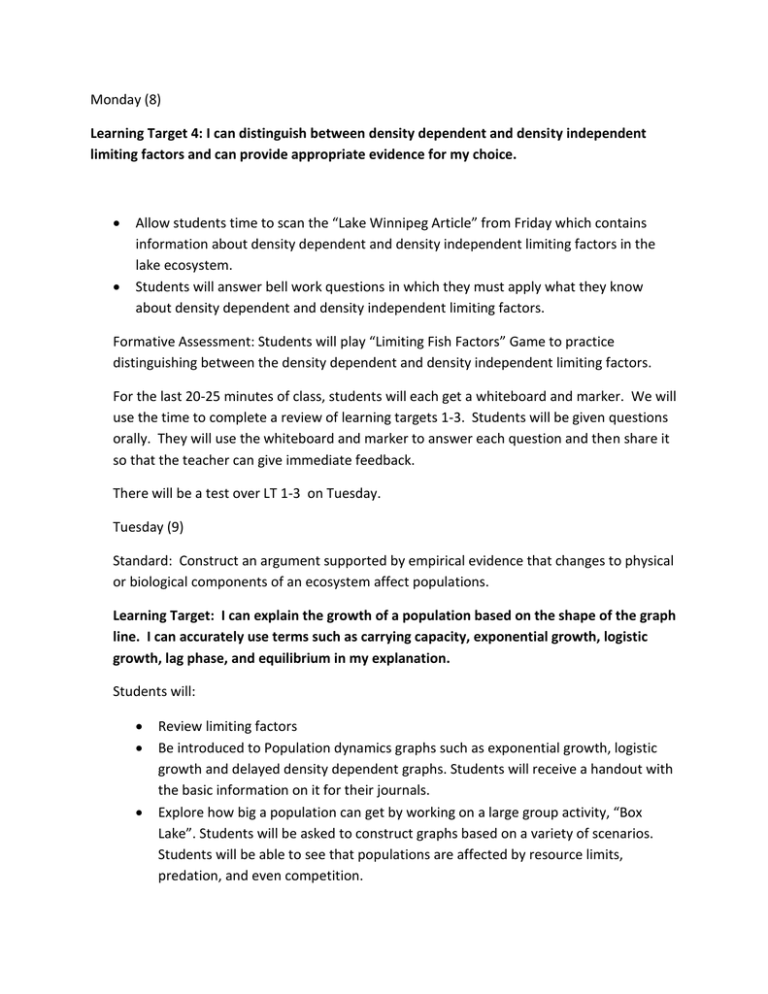
Monday (8) Learning Target 4: I can distinguish between density dependent and density independent limiting factors and can provide appropriate evidence for my choice. Allow students time to scan the “Lake Winnipeg Article” from Friday which contains information about density dependent and density independent limiting factors in the lake ecosystem. Students will answer bell work questions in which they must apply what they know about density dependent and density independent limiting factors. Formative Assessment: Students will play “Limiting Fish Factors” Game to practice distinguishing between the density dependent and density independent limiting factors. For the last 20-25 minutes of class, students will each get a whiteboard and marker. We will use the time to complete a review of learning targets 1-3. Students will be given questions orally. They will use the whiteboard and marker to answer each question and then share it so that the teacher can give immediate feedback. There will be a test over LT 1-3 on Tuesday. Tuesday (9) Standard: Construct an argument supported by empirical evidence that changes to physical or biological components of an ecosystem affect populations. Learning Target: I can explain the growth of a population based on the shape of the graph line. I can accurately use terms such as carrying capacity, exponential growth, logistic growth, lag phase, and equilibrium in my explanation. Students will: Review limiting factors Be introduced to Population dynamics graphs such as exponential growth, logistic growth and delayed density dependent graphs. Students will receive a handout with the basic information on it for their journals. Explore how big a population can get by working on a large group activity, “Box Lake”. Students will be asked to construct graphs based on a variety of scenarios. Students will be able to see that populations are affected by resource limits, predation, and even competition. Respond to questions about Box Lake and each graph. Students will use the Population Dynamics handout to help them explain each part of the graph line. Review each type of graph just before the bell rings. Formative assessment: Thumbs Up/Down to get a sense of where students are in their understanding of carrying capacity and exponential and logistic growth. Wednesday (10) Standard: MS-LS2-1. Analyze and interpret data to provide evidence for the effects of resource availability on organisms and populations of organisms in an ecosystem. Construct an explanation that predicts patterns of interactions among organisms across multiple ecosystems Learning Target: I can explain the growth of a population based on the shape of the graph line. I can accurately use terms such as carrying capacity, exponential growth, logistic growth, lag phase, and equilibrium in my explanation. http://www.otherwise.com/population/exponent.html Students will: Construct growth graphs using simulation from biologycorner.com Predict shapes of the graph lines based on the birthrate and resources available to support the population. Students will read information about exponential and logistic growth and will complete four experiments on the site to see how the growth of a population is affected when birth rate and carrying capacity are manipulated (1.2, 1.4, 1.6, 1.8 and 2.0). Students will manipulate the model controls and will sketch graphs of the model results. Students will then observe and sketch logistic growth. Students will observe the shape of a graph showing logistic growth. In this model, students will see that logistic growth is dependent not only on the birth rate, but on the resources available for the population. With logistic growth, as the population becomes denser, limiting factors such as disease, stress, and overcrowding affect the size of the population which is displayed on the logistic growth graph as “carrying capacity”. By the end of the lesson, students will be expected to recognize the difference between logistic and exponential growth. Students will also describe the patterns that develop and will be asked to differentiate between exponential and logistic growth.


